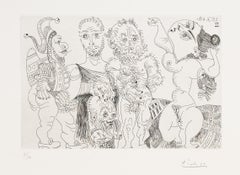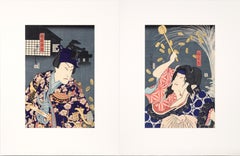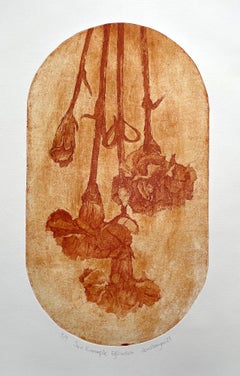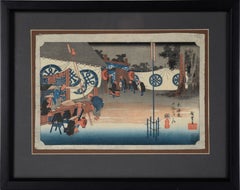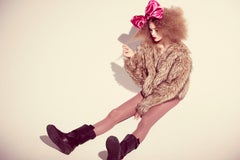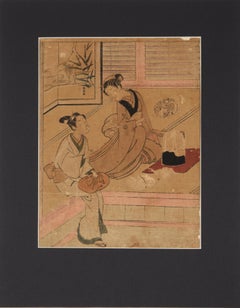Paper Figurative Prints
20th Century Modern Paper Figurative Prints
Paper, Etching
1860s Edo Paper Figurative Prints
Paper, Ink, Woodcut
21st Century and Contemporary Contemporary Paper Figurative Prints
Archival Paper, Etching, Aquatint
1830s Impressionist Paper Figurative Prints
Rice Paper, Woodcut
2010s Paper Figurative Prints
Plexiglass, Photographic Paper
18th Century Edo Paper Figurative Prints
Ink, Rice Paper, Woodcut
21st Century and Contemporary Contemporary Paper Figurative Prints
Archival Paper
2010s Contemporary Paper Figurative Prints
Paper, Drypoint, Crayon, Ink
1980s Surrealist Paper Figurative Prints
Paper, Lithograph
1910s Vienna Secession Paper Figurative Prints
Paper
1850s Edo Paper Figurative Prints
Paper, Pigment, Woodcut
1890s Post-Impressionist Paper Figurative Prints
Paper, Lithograph
1970s Surrealist Paper Figurative Prints
Paper
2010s Street Art Paper Figurative Prints
Archival Paper, Digital
1960s Paper Figurative Prints
Paper, Cardboard
1980s Pop Art Paper Figurative Prints
Paper, Screen
21st Century and Contemporary Contemporary Paper Figurative Prints
Archival Paper, Giclée
2010s Contemporary Paper Figurative Prints
Paper, Etching
1920s Vienna Secession Paper Figurative Prints
Paper
1980s Contemporary Paper Figurative Prints
Paper, Engraving, Screen
1970s Contemporary Paper Figurative Prints
Paper, Screen
1970s Modern Paper Figurative Prints
Paper, Cardboard
1950s Paper Figurative Prints
Paper, Cardboard
2010s Photorealist Paper Figurative Prints
Photographic Paper, Digital
1980s Post-Modern Paper Figurative Prints
Oil, Laid Paper, Pencil, Lithograph
Early 2000s Contemporary Paper Figurative Prints
Paper, Etching
Late 18th Century Edo Paper Figurative Prints
Ink, Wood Panel, Rice Paper
1970s Surrealist Paper Figurative Prints
Paper, Ink, Lithograph
1980s Contemporary Paper Figurative Prints
Paper, Lithograph, Ink
1970s Contemporary Paper Figurative Prints
Paper, Offset
1980s Other Art Style Paper Figurative Prints
Paper, Screen
Early 2000s Contemporary Paper Figurative Prints
Paper, Engraving, Etching, Aquatint
2010s Contemporary Paper Figurative Prints
Drypoint, Paper, Etching
2010s Contemporary Paper Figurative Prints
Color, Inkjet, Archival Paper
Mid-20th Century Paper Figurative Prints
Paper
1940s Other Art Style Paper Figurative Prints
Paper, Lithograph, Offset
20th Century Modern Paper Figurative Prints
Paper, Lithograph
1980s Cubist Paper Figurative Prints
Lithograph, Paper
Late 18th Century Edo Paper Figurative Prints
Paper, Ink, Woodcut
2010s Contemporary Paper Figurative Prints
Paper, Etching
2010s Contemporary Paper Figurative Prints
Paper, Etching
1980s Contemporary Paper Figurative Prints
Paper, Lithograph
2010s Contemporary Paper Figurative Prints
Paper, Drypoint
Early 2000s Modern Paper Figurative Prints
Paper
1980s Contemporary Paper Figurative Prints
Archival Paper, Screen
1970s Pop Art Paper Figurative Prints
Paper, Watercolor, Lithograph
Mid-20th Century Surrealist Paper Figurative Prints
Paper
1950s Pop Art Paper Figurative Prints
Paper, Lithograph
1980s Pop Art Paper Figurative Prints
Postcard
Mid-20th Century Surrealist Paper Figurative Prints
Paper
2010s Contemporary Paper Figurative Prints
Handmade Paper, Giclée
Early 19th Century Edo Paper Figurative Prints
Ink, Rice Paper, Woodcut
1970s Contemporary Paper Figurative Prints
Lithograph, Paper
2010s Pop Art Paper Figurative Prints
Paper, Screen
1970s Pop Art Paper Figurative Prints
Paper, Offset
2010s Contemporary Paper Figurative Prints
Paper
1880s Modern Paper Figurative Prints
Paper, Lithograph
1850s Modern Paper Figurative Prints
Paper, Lithograph
Early 2000s Contemporary Paper Figurative Prints
Paper, Engraving, Lithograph
2010s Surrealist Paper Figurative Prints
Paper, Color
